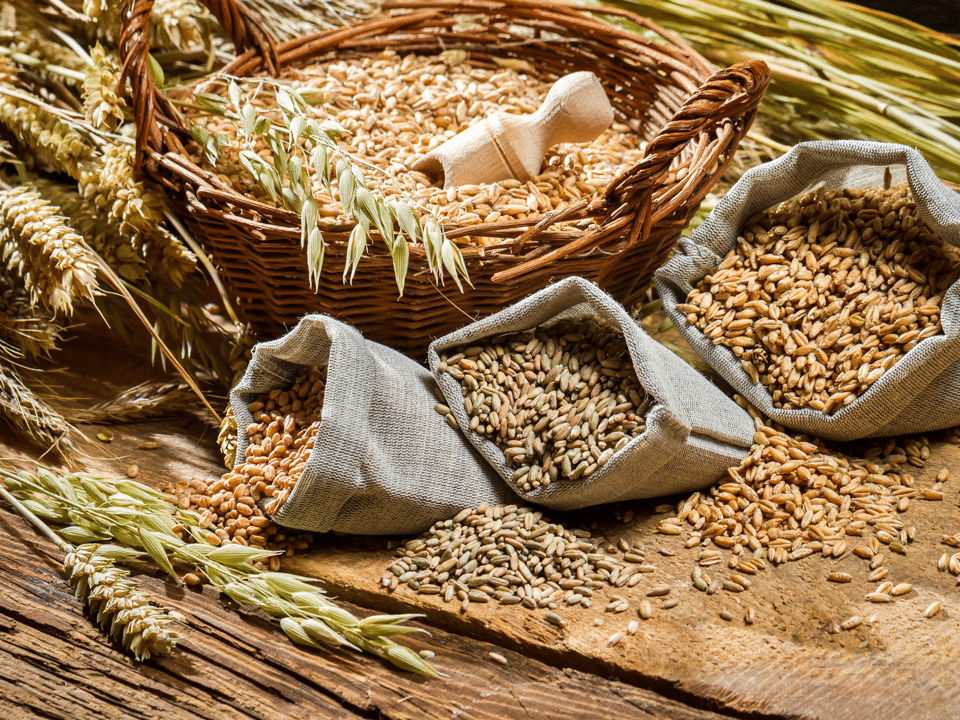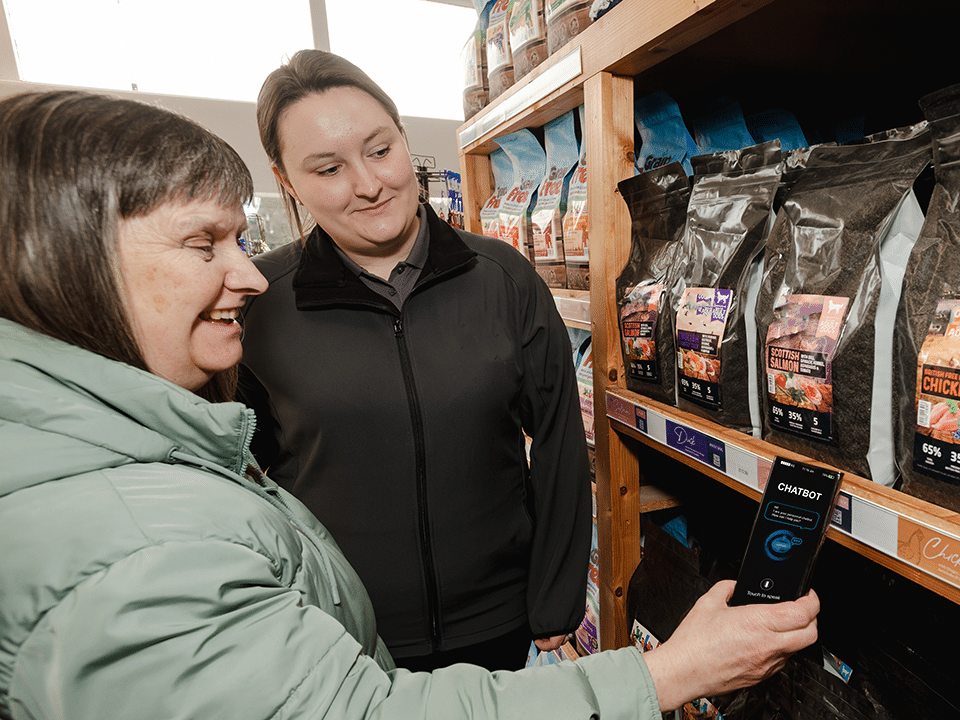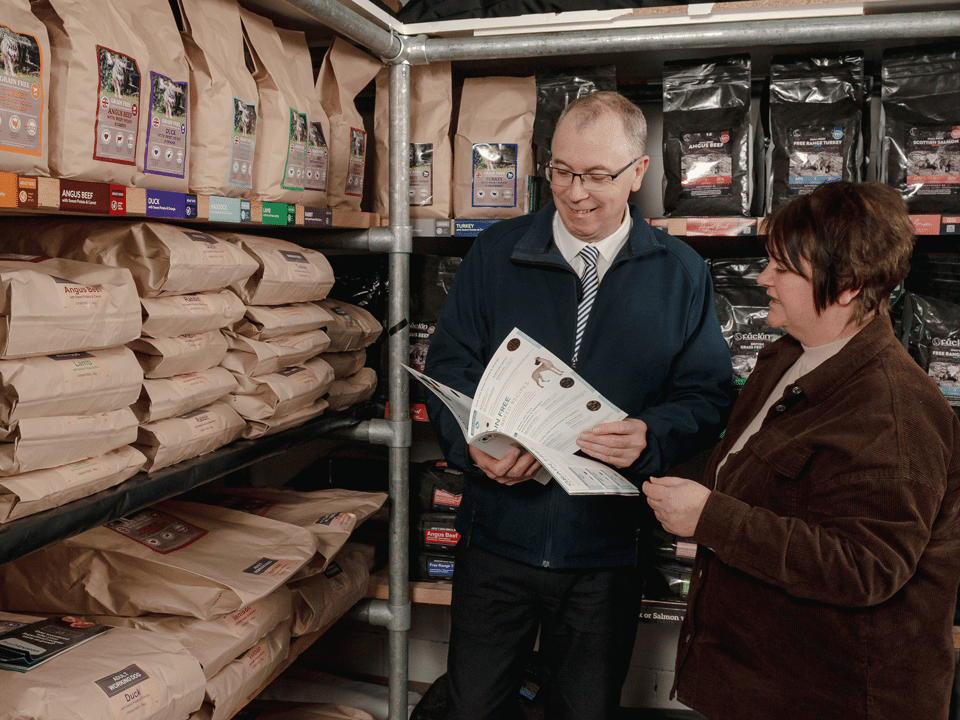
A common dilemma for dog owners is whether to feed their pet a grain-inclusive or grain-free diet. With such a wide variety of pet foods on the market, making the right choice can be challenging. This article explores what grain-free pet food is and highlights the benefits of choosing this type of diet for your dog.
What Are Grains?
Grains are ingredients rich in carbohydrates and are frequently used in dog food. Typical grain ingredients include oats, wheat, barley, maize, and rice.
It’s important to remember that grains are not inherently harmful to dogs. When included in the correct proportions, they provide a valuable source of energy and fibre, which promotes good digestion. Grains also supply essential nutrients such as linoleic acid, a fatty acid vital for a dog’s health.


Defining Grain-Free Pet Food
Grain-free pet food has gained popularity in recent years. A grain-free diet is formulated without cereals or grains. Instead, it typically contains ingredients like white potatoes, sweet potatoes, legumes, lentils, and peas.
Many dogs find it difficult to digest grains, and feeding them a grain-free diet can be particularly beneficial for those with sensitivities or intolerances to grains.
Is Grain-Free Pet Food Also Gluten-Free?
A common misconception is that grain-free pet food is synonymous with gluten-free pet food. In reality, gluten-free diets exclude ingredients containing gluten—typically found in wheat and barley—but they may still include other grains. While many grain-free products are also gluten-free, some may contain hidden sources of gluten. Always check the label carefully or consult your vet for advice.

Benefits of Grain-Free Pet Food
Sensitivities and Intolerances
For dogs with sensitivities or intolerances, a grain-free diet can make a significant difference. Some dogs react to grains with symptoms such as skin irritation, rashes, vomiting, and excessive shedding. A grain-free diet can help alleviate these issues.


Improved Skin and Coat Condition
Grain-free diets often prioritise higher-quality animal ingredients, such as freshly prepared meats and fish, which naturally contain omega‑3 fatty acids. These essential fats are crucial for maintaining healthy skin and a lustrous coat, as well as overall wellbeing.
Reduced Gas Production
Excessive gas can be a sign of digestive discomfort. Certain grains, such as wheat and corn, may contribute to increased gas production in some dogs. Grain-free pet food often incorporates prebiotics—like MOS, FOS, and fibre—to support the growth of beneficial gut bacteria, which can help reduce gas and promote a healthier digestive system.
Enhanced Digestibility
Dogs evolved from carnivorous ancestors, and many find it easier to digest diets that are richer in meat and lower in carbohydrates. Grain-free pet food generally features a higher proportion of high-quality protein sources, making it easier for some dogs to digest, especially when these proteins are freshly prepared.

How to Select the Right Dog Food
It can be problematic for pet owners to know what food they should feed their canine. An important consideration when deciding is to see if the food is complete and balanced. This means that there is the correct balance of essential nutrients to fulfil a dog’s needs. It’s also vital for pet owners to consider the quality of the ingredients used in food. For example, looking for freshly prepared protein sources can help ensure a highly nutritious and digestible feed is selected. Pet owners should also consider the right nutrition when choosing their pet’s dog food.
Once all of these factors are considered, the decision comes down to the dog’s owner deciding if they wish to feed their pet a Grain or Grain-Free pet food.

Emma Hunt
GA Pet Food Partners Pet Nutritionist
Emma has an undergraduate in Animal Behaviour and Welfare and subsequently completed a Masters in Veterinary Public Health at the University of Glasgow. Following this, she worked in the agri-food industry for several years and kept her own sheep flock before joining GA in 2021. Emma enjoys training and competing in strong woman, or spending time with her much-loved collie Lincoln.
You may also like...
Article written by Emma Hunt
The Pros and Cons of AI in Pet Retail
You may have frequently encountered the term “AI” or “AI technology” in the media. From unlocking your phone using Face ID, asking for directions on your [...]




